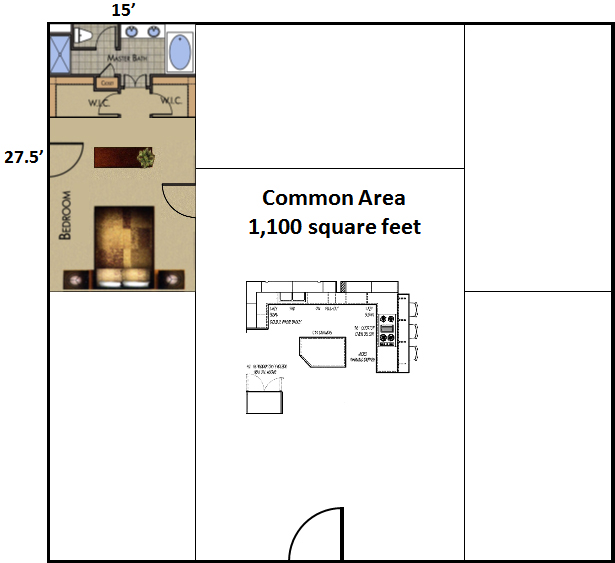A couple of days ago I read a post at New York magazine about a new kind of apartment:
This weekend, residents will begin moving into New York’s newest experiment in communal living: a blocky red-and-white building in Williamsburg, nestled snugly against the BQE. It’s run by the company Common, which sells “co-living,” a relatively new product that’s a start-up version of rental roommate shares.
Click the link for the full story, but it brought to mind a random thought that’s been on my mind for a long time. I’ve never mentioned it since it’s light years outside my wheelhouse of knowledge, but it’s Monday, so why not?
As near as I can tell, the Common approach is a building full of bedrooms of various sizes and prices. There are common bathrooms and dining areas in various places, and the rent ranges from $2,250 to $3,190. But if you’re going to go the dorm route, why not do it better? Take a look at the floor plan below:

I chose the bedroom size because it’s the size of my master bedroom. It’s plenty large and comfy, with room for two, lots of closet space, and a nice private bathroom. Five of these bedrooms enclose a 1,100 square foot common area, which is about the size of the entire downstairs of my house. In real life it would be divided into various areas, either via walls or potted plants or what have you. There’s plenty of space for a large kitchen in the center and various dining, seating, and TV rooms around it. The entire thing is 3,162 square feet, and every bedroom has two doors: one into the common area and a private door to the outside. The building would presumably have the usual amenities depending on how upscale it is: fitness center, laundry facilities, storage areas, etc.
So I’m curious: why doesn’t anyone do this? Are there regulatory issues? Has it been tried and failed? It seems like a decent idea that provides a lot of space for the money, and plenty of privacy too if you build the bedrooms right (i.e., good soundproofing). If five roommates are just too many, you could do the same thing with three bedrooms at a somewhat higher cost.
Obviously this isn’t ideal for everyone, but especially in high-cost urban areas it seems like a decent compromise between commune and private apartment that could be rented out for a reasonable price. Has this been done? If so, is there something I’m not thinking of that kept it from catching on?













